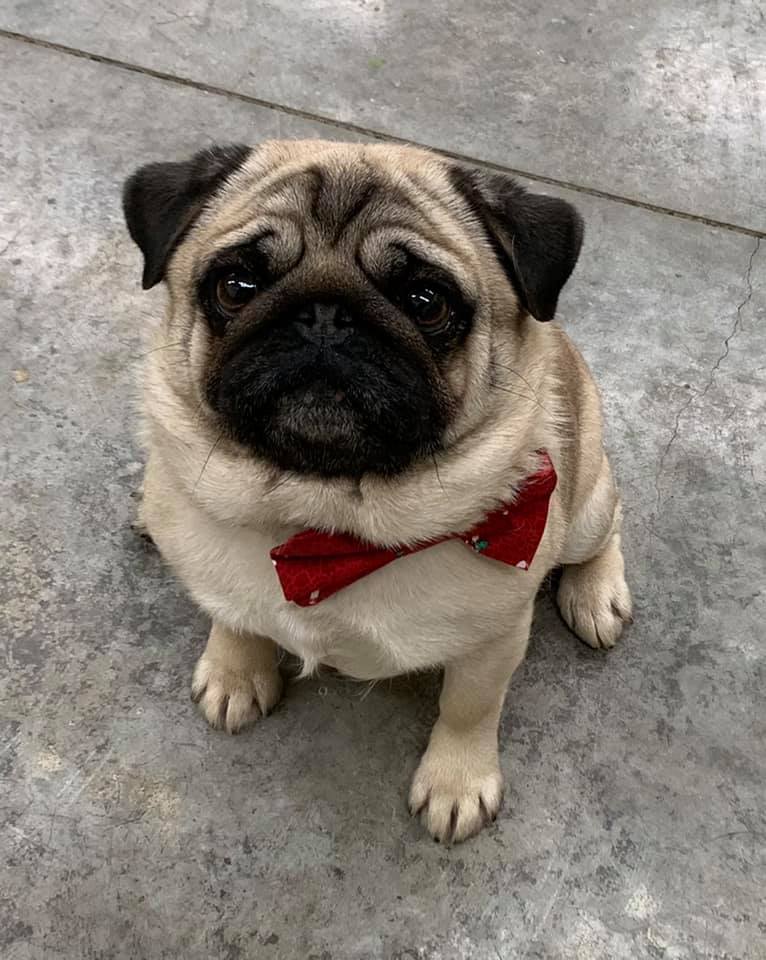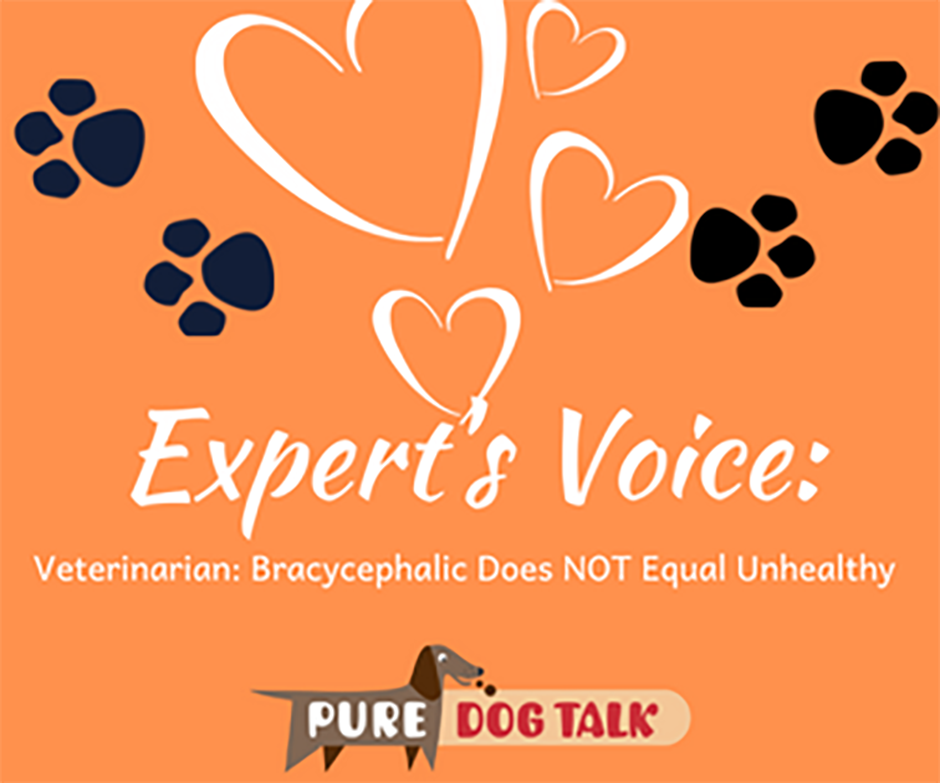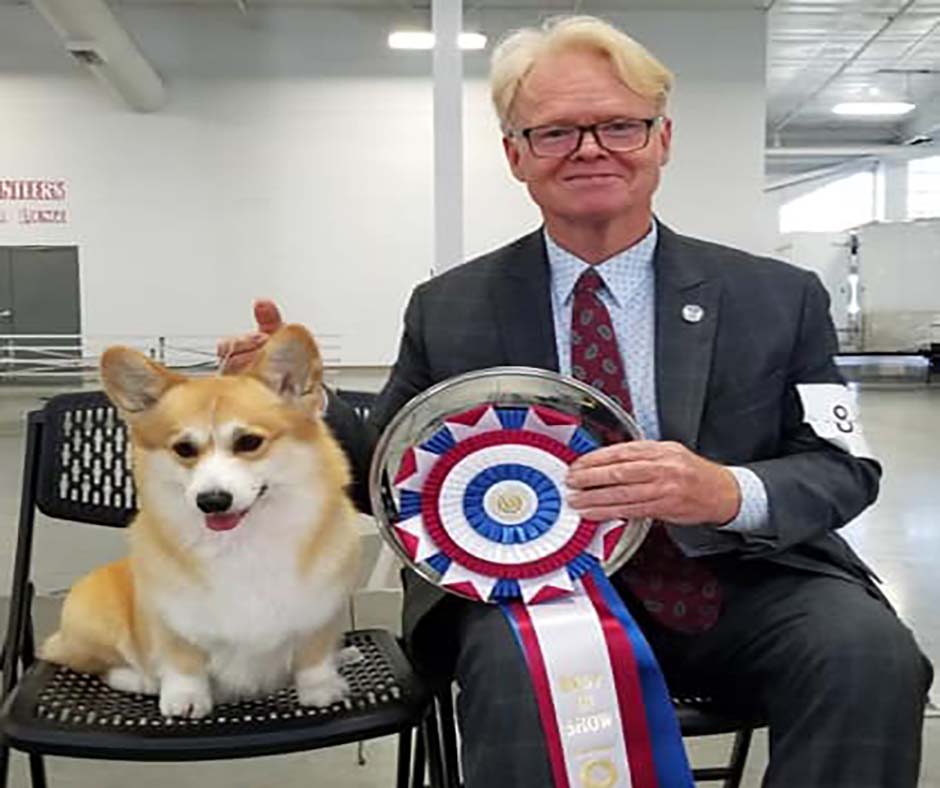517 — Veterinarian: Brachycephalic Does NOT Equal Unhealthy
Veterinary Insight on Why Brachycephalic Does NOT Equal Unhealthy
Dr. Maryanne Mack, DVM, breeder of top winning Boston Terriers, joins host Laura Reeves to discuss recent developments in Europe in regards to legislating the breeding of specific breeds.
“I went to vet school because I love purebred dogs,” Mack said. “I love their role as companions and I wanted to go to vet school really to focus on that role of the dog in our life… Just really wanting to work with people and their pets and breeders as well to just make healthier companions for all of us.

Photo of host Laura Reeves’ champion pug who likes to catch mice in her spare time.
“I think that the fact that a lot of groups have started to associate having a short face with being unhealthy is a really slippery slope that we don’t wanna go down. There’s a couple components of brachycephalic airway syndrome. Those are stenotic nares, or really tight nostrils, an elongated soft palate and a hypoplastic trachea. Those are sort of the three main issues that you see with brachycephalic airway syndrome.
“We don’t have any studies showing those are directly related to the length of the nose.
“The component that we really have to look for, that we know make the biggest difference in these dogs, is the elongated soft palate…
“That’s not related to how long the nose is, that’s related to different genes that are writing for the length of the soft palate. We see long soft palates in dogs with long noses. We see this in Labradors, we see this in mixed breed dogs. So, it’s not only a brachycephalic issue.
“I think it’s really important to note that these things can occur in any breed of dog. They do happen to occur more in brachycephalic dogs, but we don’t have concrete evidence that it’s directly related to the length of the nose.
“Most brachycephalic breeds, with the exception of some of the more mastiff types, these dogs were bred to be companions. That’s their job and they do that very, very, very well. Part of the reason we love them so much is that these brachycephalic facial features elicit almost an infantile like response to people. I think that focusing on the fact that these are companion dogs.
“These dogs are not out flushing birds, they’re not working dogs, they are meant to make people happy, sit on your lap. I absolutely believe that they should be able to do things like go on a little hike …. they should absolutely be able to do that and be able to breathe while they do that. But this is not a dog that’s out herding sheep in the summer. I think keeping that in perspective is really important.
“I think we need to focus, as preservation breeders, on doing a little bit of a better job on selecting breeding stock and producing healthier versions of every breed. But for brachycephalic, specifically, we all know that there are some dogs out there that are not good breathers and that happens.
“I think the hard part as a breeder is to say ‘OK this dog might be beautiful, this dog might have a great top line and this has great movement but he cannot breathe and I should probably put him in a companion home where he won’t be bred.’ That’s a really, really hard decision to make, but I think as we move forward, especially in this new culture and climate, we have to make more of those decisions.
Preservation Breeders are the Solution
“We as preservation breeders are actually the solution. We are the solution to this problem. If we work together to breed healthier dogs and if we work together to breed more of these dogs… I can’t tell you how many of my clients come in with a puppy mill puppy and they say ‘Well Dr. Mack, you told us some great breeders but we didn’t wanna wait for three years, so we ordered this one online and picked it up at the airport and here he is.’
“It breaks my heart because we as preservation breeders, if we had more available dogs that were well bred, people would buy them and they would love them. Vilifying people that breed more than one to two liters a year or whatever number you’ve decided is too many I think is detrimental to all of us.
“I first posted a statement in the beginning of 2020 basically saying I’m a veterinarian, I breed these dogs and it can be done right. These dogs are not inherently unhealthy. I received enormous backlash basically saying this veterinarian shouldn’t be a veterinarian, how can any veterinarian promote the breeding of brachycephalic dogs. It went so far as to contact my place of work, contacting me personally. I had to take my website down. I had to make everything private. I had to tell people who had wanted me to be an advocate for this I can’t do it right now because they’re coming for me.
“In the veterinary community I get backlash like ‘how can you breed these dogs.’ Oftentimes these people, once they meet my dogs and realize they can breathe and they’re healthy and they look great, they realize that we see a disproportionate number of unhealthy dogs just by the nature being veterinarians.
“I’ve actually done a little self-study where a dog comes to see me and I always find out where the dog came from. Then I make a note what issues does this dog have. About 95% of brachycephalic dogs I see that are bad breathers are from a pet store, a puppy mill or rescue. That is just the fact that I’ve gotten over six years of being a veterinarian, that these dogs are often the ones that they ordered online.”
Listen to this fabulous interview with Bulldog specialist Jay Serion to learn more about the Bulldog Club of America’s work on breeding healthy dogs. And this outstanding Love the Breeds episode with more information about Pugs from three nationally renowned breeders.
307 – Bill Shelton, part 2: Breeding for Genetic Diversity
Bill Shelton on Breeding for Genetic Diversity, Breeding Up and More
In part two of our series, Bill Shelton, leading advocate for preservation dog breeders, and host Laura Reeves have a spirited conversation about how to improve the health of our breeds while maintaining genetic diversity.
“Leading theriogenologists say breeders are suppressing genetic diversity,” Shelton said. “Only testing phenotype not genotype in hip x-rays for example, removes dogs from the gene pool without understanding the genotype. When we eliminate genes for one thing we don’t know what genes we’re removing that are positive.”
Lethal genes must be removed, but until we have a DNA genetic marker we don’t really know, Shelton noted. We need to breed carriers and potentially affected as well in order to preserve a variety of genes for the future.
Weaving genes to make a healthier dog
“We are asking more of our dog breeding programs than we are for our own humanity,” Shelton said. “We’re actually holding dogs to a higher standard than ourselves and the future of humans.”
Taking the conversation full circle, Shelton noted that legislators are listening to extremists rather than experts in animal husbandry.
Messaging… Again!
“We need to get our message out there,” Shelton said. “We need to have more advocacy for purebred dogs. We need to step outside this circle of dog shows.”
In an outside-the-box idea, Shelton suggested that AKC needs to consider rebranding as an option, to call themselves a conservancy of heritage breeds.
“How we talk about what we do is what’s important,” Shelton said.
In the “other great ideas department,” Shelton asked rhetorically, “Where is the breeder’s committee in the delegates? Where is the VP of breeders at AKC?”
“We need to take the focus away from showing and put our focus on breeding dogs,” Shelton said. “We are at the point that an amateur delegate body is running what has become a professional industry. Everyone makes money. Who doesn’t make money? Dog breeders.”
If you missed part 1, listen here.


